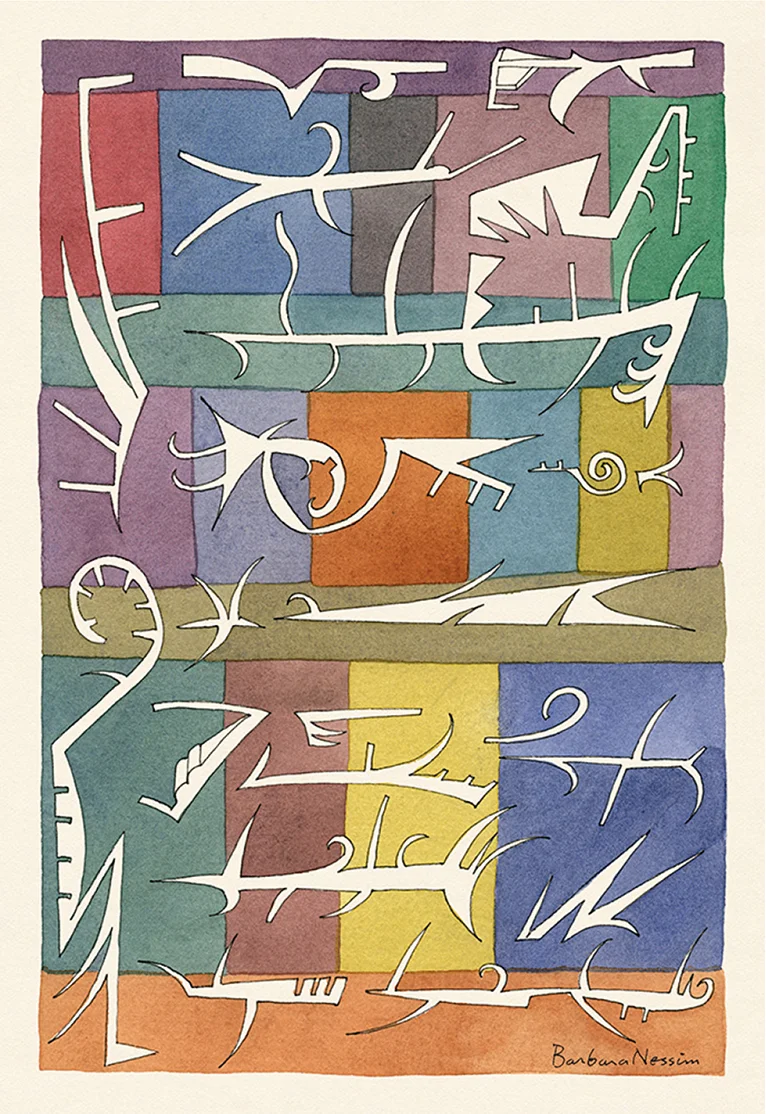What drives Barbara Nessim
Barbara Nessim is the quintessential New Yorker. Born in the Bronx, schooled at Pratt, teaching at School of Visual Arts and Parsons, she has always lived in New York.
I love Barbara Nessim. She is a unique, and singular, talent. She has always embodied strength and grace to me. She has always fearlessly listened to her inner voice. She inspires.
I am trying to remember the first time I met Barbara Nessim. I do believe I met her work before I met her. But she was always there, as far back as I can remember, to my early New York City days in the 1970s. Or perhaps even earlier, since she started publishing her work in the 60s when I was a wide-eyed teenager living in Connecticut. Her work had an instant appeal because it was unique and struck a chord. It was totally connected to the political and social times. Her work spoke of a drive to succeed that a lot of us young women had. Her work was brave.
All of the iconic images she created have left an imprint upon my brain. I have revisited those images, and many more, while researching this article, and am humbled by her prodigious output. Over the years I am thrilled to have had the opportunity to meet her, including in her once-studio near the Holland Tunnel. She is always a passionate, gracious, and driven presence.
She has never stopped working all of these years. She has stayed fresh, reinventing herself while also staying true to herself, never stagnating.
She has always exhibited her work, and she has now been the subject of some extraordinary exhibits, including The Victoria & Albert Museum show in 2013, "Barbara Nessim: An Artful Life", which showcased her work from the 1960s to the present, and a show dedicated to her remarkable early work showcasing her WomanGirl drawings from the 70s, "Works on Paper" at the Little Big Man Gallery in Los Angeles in 2017.
Of all of the quotes I have heard from her, the ones that stick out in my mind are ones from the enlightening video that accompanied her Victoria & Albert Museum show whenever she explained what drives her.
About her iconic 1966 image "Star Girl with Banded Blue Wave" she said it depicted a strong woman looking at you directly, who was on a pedestal, who is a powerful part of the universe, who is part of the world. Barbara depicted the woman with an empty white color inside so that "she wasn't any color, she was all color, and she could be anybody".
Of her WomanGirl series of the early 70s, Barbara explained that the driving force behind those was that, whether you were 50, 60, or 70, people called you a girl. She was thinking about women and the hard work they are doing all the time, wearing the right clothes and makeup, to make themselves "present".
In 1987, her Flag series "started with my thinking about migration, immigration, integration, and population growth, and how people, when they think about people from different countries...they have preconceived ideas". So she drew the flags images so that, when you first see the image, you think of the country it depicts, but, when you walk up closer to the images, the flag disappears, and you see the drawings within of people doing everyday things, no matter what county they are from.
When she first discovered the personal computer in the early 80s, around the time that I first met her, she was captivated and prescient in seeing they would be an integral part of our futures. She created bold, graphic images on the computer, outputting them to beautiful color cibachrome prints. They are striking and beautiful and poster-like.
At Parsons, where she was head of the Department of Illustration for twelve years, she implemented a changeover in 1996 and installed computers so that illustrators could learn to work on them.
Always ahead of her time.
Traci Churchill
Roswell, Georgia
August 18, 2017
Star Girl, 1966
Superman Carrying Girl with Green Shoes, 1963
Beware of Blue Sky Syndrome, 1967
Acrobat
WomanGirl, 1971
Flag series
Flag series
Flag series
Flag series
Woman Madness, 1972
Blue and Pink Line, 1982-1984
Black and White, 1982-1984
Turquoise with Yellow Line, 1982-1984
Time cover, 1982
Boston Globe, 1983
Rolling Stone cover
Untitled, 1994
Sketchbook 71, 1998
Black Truth White Lies, 2003
Sketchbook 76, 2000
Sketchbook 91, 2008
David Bowie, 2013
Untitled, 2011
Missing You, 2010
A Current Past, 2010




























